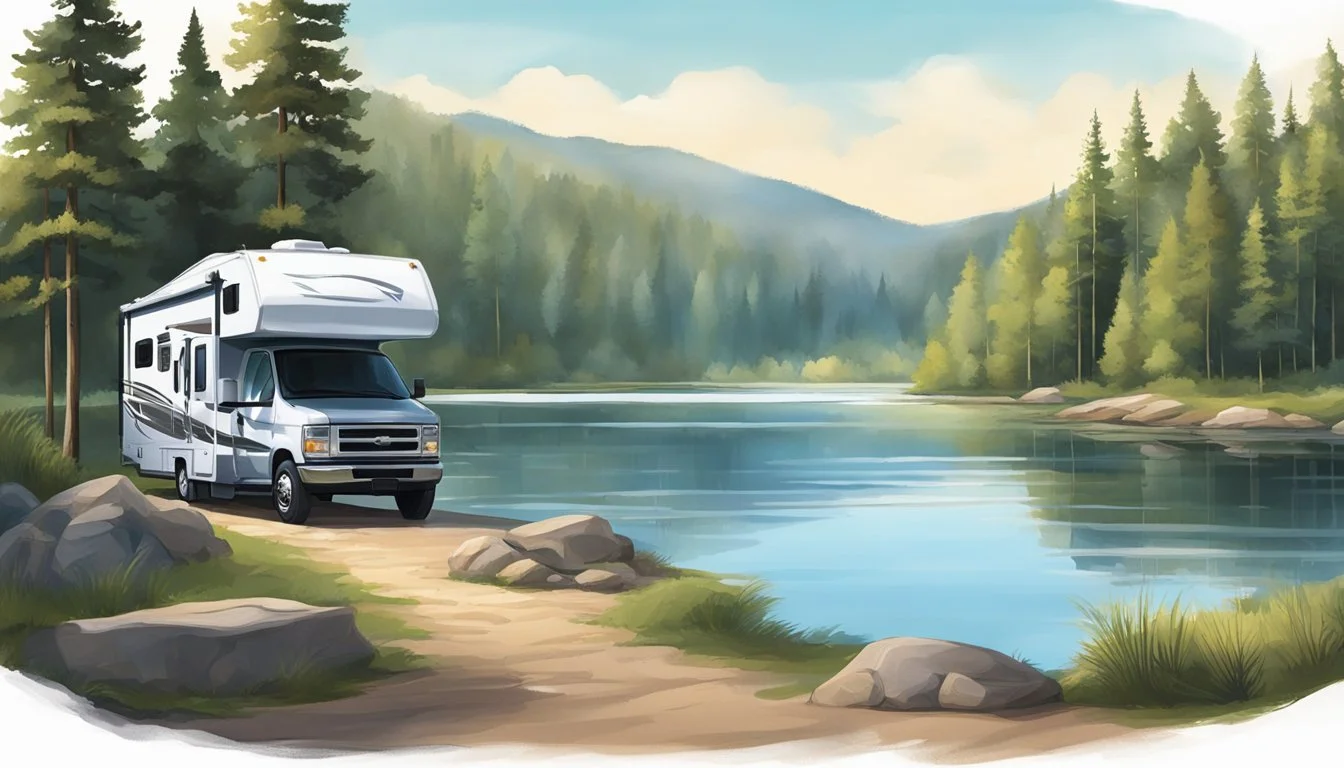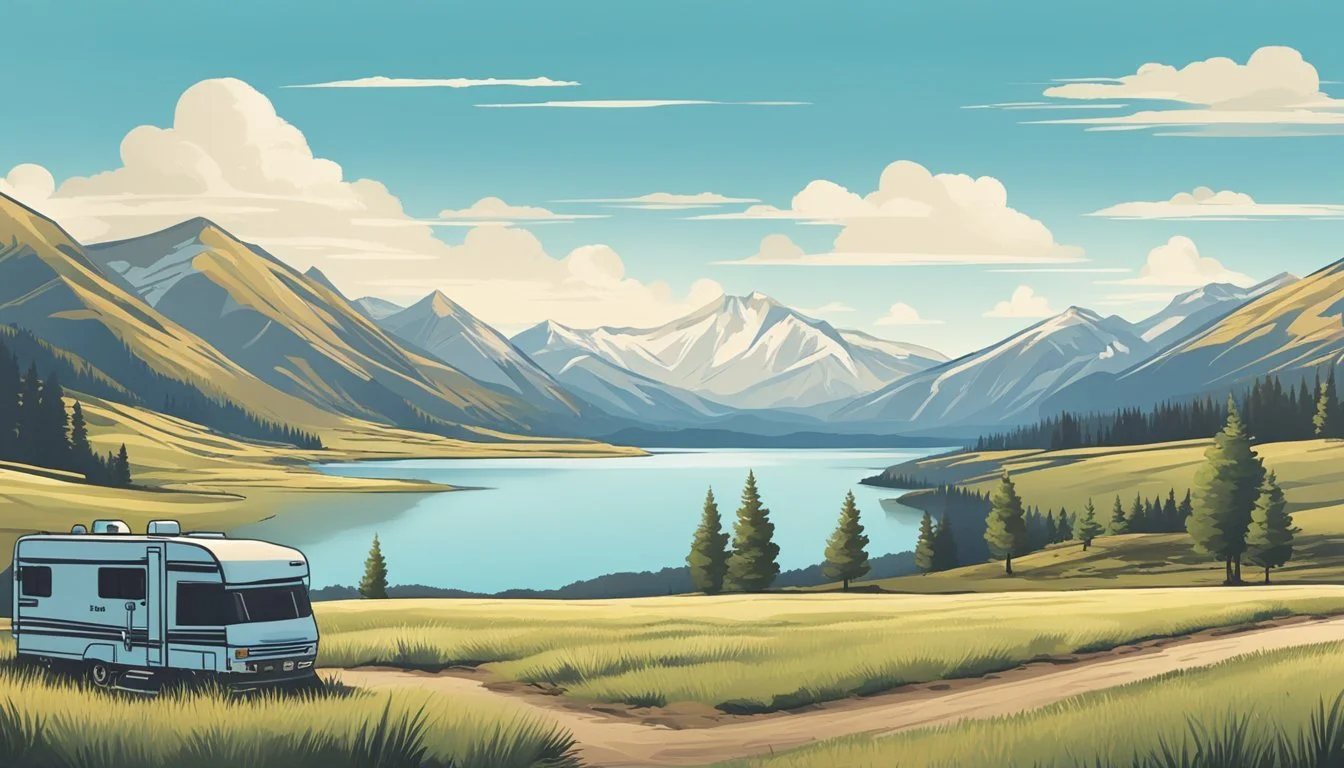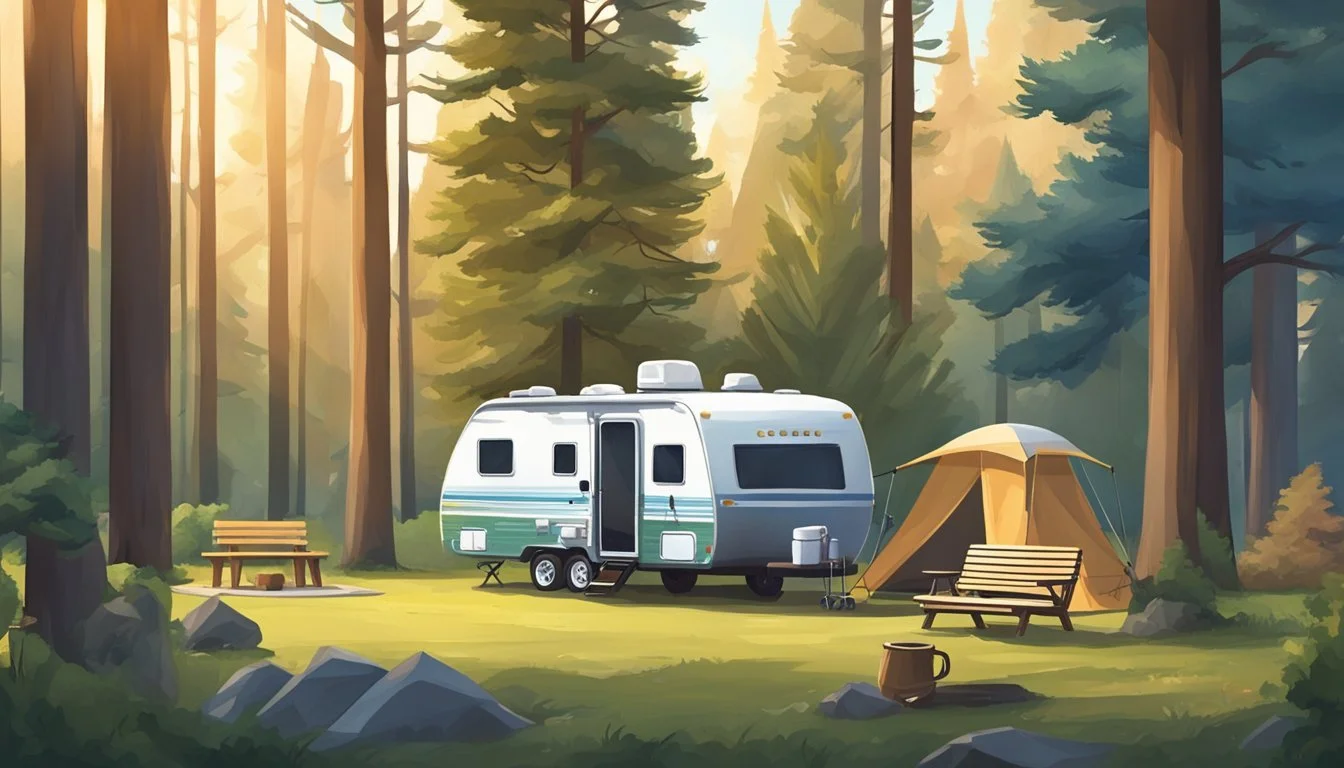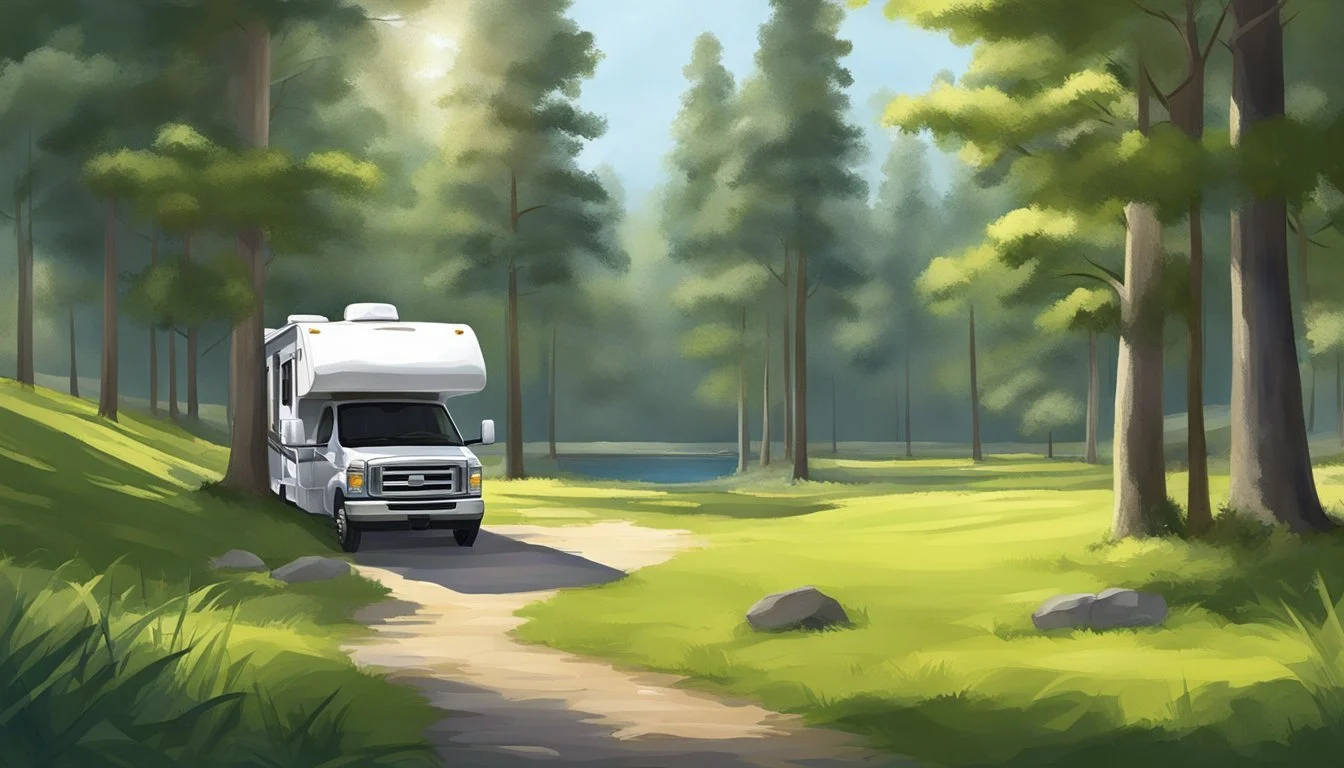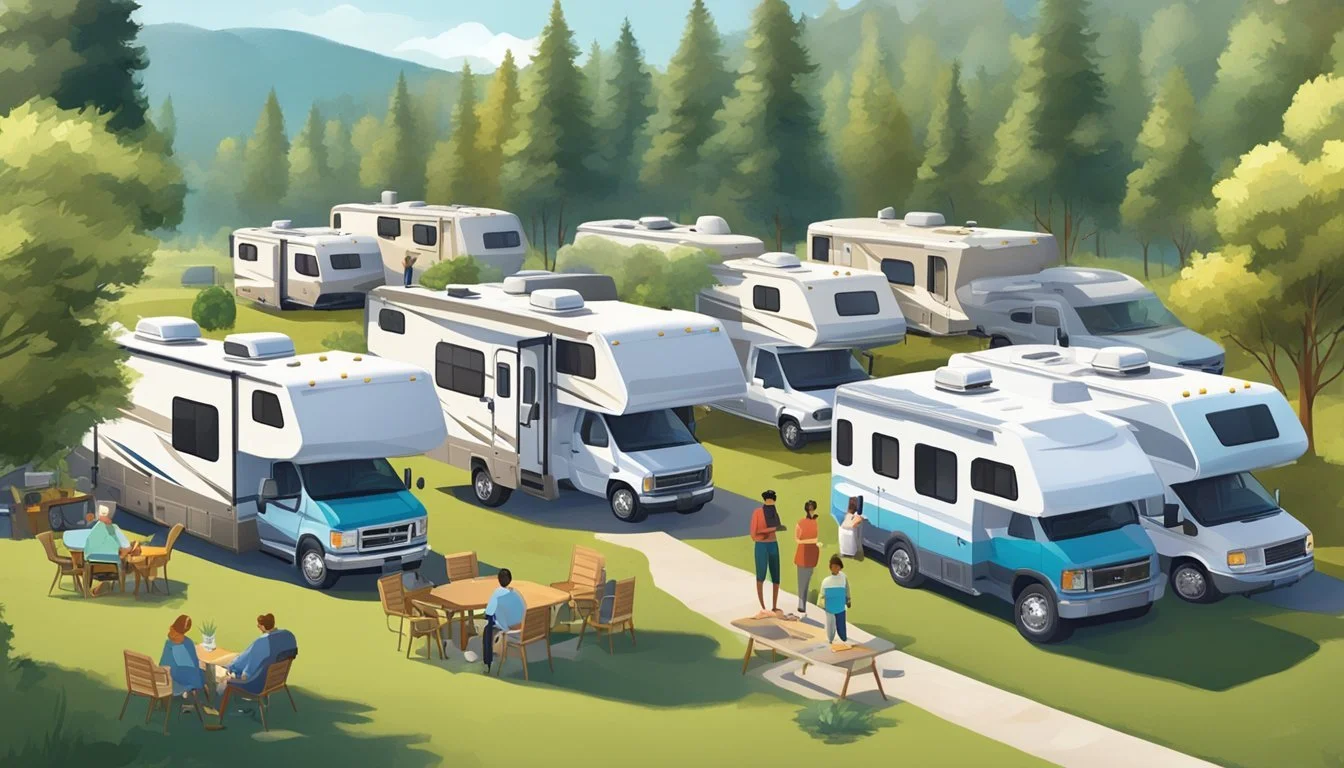Free Land for RV Living
Tips for Securing Your Ideal Spot
Finding free land for RV living offers an exciting opportunity for adventure and financial savings. Whether exploring dense woodlands, arid deserts, or stunning coastlines, public lands in the U.S. provide countless boondocking sites for those seeking nature's solitude.
Popular apps like FreeRoam, Campendium, and The Dyrt Pro list thousands of free RV camping locations across the U.S., Canada, and Mexico, making it easier than ever to locate the perfect spot. These resources include user reviews and essential filters to help you find a picturesque and suitable site.
Living on free land might also involve opportunities like staying on Bureau of Land Management (BLM) land or arranging a workamping gig. Embracing the RV lifestyle doesn’t just promise cost savings, but also opens up endless possibilities to explore beautiful and remote areas that many people never get to see.
Understanding RV Living
Living the RV lifestyle offers freedom, flexibility, and adventure, making it an attractive option for many individuals and families. This section will delve into the appeal of RV living, how to assess your readiness for the lifestyle, and the legal considerations to keep in mind.
The Appeal of RV Living
RV living offers a unique blend of mobility and comfort that attracts those seeking adventure without sacrificing the conveniences of home.
Many are drawn to the ability to traverse various landscapes and visit multiple locations without the need for traditional travel accommodations. Camping in an RV provides a way to enjoy nature while maintaining access to amenities like showers, kitchens, and beds.
The cost-effectiveness of RV living can also be appealing. Avoiding high rent or mortgage payments, along with other expenses like utility bills, makes it a practical option for many.
Assessing Your RV Readiness
Before transitioning to RV living, it's crucial to evaluate whether this lifestyle suits your needs and preferences.
Consider the size and type of RV necessary for your comfort. While some may prefer smaller, more nimble vehicles, others might need larger RVs with more amenities. Evaluating camping preferences, whether in remote areas or established RV parks, will influence this choice.
Assess your ability to handle the responsibilities of maintaining an RV. This includes understanding basic repairs, managing waste disposal, and ensuring the vehicle is road-ready. Financial stability is another factor, as the initial investment and ongoing maintenance can be significant.
Legal Considerations
Understanding the legal aspects of RV living ensures a smooth transition and avoids potential issues.
One critical point is domicile. Establishing a legal residence affects voting, taxes, and access to services. Several states are popular for RVers due to favorable laws and benefits.
Parking and camping regulations vary widely. Familiarize yourself with federal, state, and local laws regarding where you can legally stay overnight or longer. Some public lands allow free dispersed camping, but often have limits on stay duration.
Compliance with vehicle registration, insurance requirements, and health and safety standards is non-negotiable. Regular inspections and adherence to all legal requirements help ensure safety on the road.
Essential Equipment for RV Living
Choosing the right RV and maintaining it properly ensures a smooth experience on the road. For those who prefer boondocking, essential equipment can make the difference between a comfortable stay and a challenging one.
Choosing the Right RV
Selecting the right RV hinges on understanding specific needs and travel preferences. He should consider the size, layout, and storage capacity. Larger RVs offer more comfort but can be challenging to maneuver in tight spaces. Smaller RVs are easier to handle and park.
Key features to look for include:
Generator: Vital for powering appliances when off-grid.
Water Filter: Essential to ensure clean water supply.
Portable Toilet: Convenient for camping in remote areas.
RV Maintenance Essentials
Maintaining an RV involves regular checks and acquiring the right tools. She should start with basic tools, like a tire pressure gauge, wrenches, and a cordless drill. Keeping a maintenance log can help track repairs and schedule routine checks.
Important items to include:
Spare Tires: Always have at least one, preferably more.
Sealant: For fixing any leaks quickly.
Water Filter: Keeps the water system free from contaminants.
Generator Maintenance Kit: Includes oil, spark plugs, and air filters to ensure the generator runs smoothly.
Boondocking Necessities
Boondocking requires preparation as it often lacks amenities like electricity or water hookups. They should invest in solar panels, which provide a renewable energy source. A robust water storage system is also crucial to avoid frequent trips for refills.
Essential equipment for boondocking:
Generator: Ensure it is quiet and fuel-efficient.
Water Filter and Storage Containers: Collect and store enough clean water.
Portable Toilet: A sanitary solution when facilities are not available.
These essentials help make full-time RV living more enjoyable and less stressful, ensuring they are prepared for any situation on the road.
Free Land and Legalities
When searching for free land for RV living, it's important to understand the types of public lands available and the regulations that govern them. Different rules apply to Bureau of Land Management (BLM) areas and National Forests, which can impact where and how long you can stay.
Public Lands and Ownership
Public lands include vast stretches managed by various agencies, such as the BLM, National Forests, and Wildlife Management Areas. These lands are open to the public for recreation, and RV camping is often permitted for free. Public lands cover diverse environments, from deserts to woodlands.
Ownership and management of these lands can determine the rules for RV camping. For instance, the BLM oversees millions of acres primarily in the western United States, offering ample opportunities for boondocking. National Forests, managed by the U.S. Forest Service, also provide dispersed camping options. It's crucial to note that each managing body may have different regulations on the length of stay and permitted activities.
Understanding BLM and National Forest Rules
The BLM and National Forests each have specific rules for RV camping that must be followed to avoid fines or eviction. For BLM land, the common rule is a 14-day stay limit within a 28-day period in any given area, ensuring minimal impact on the environment and equitable access for all users.
National Forests have similar rules, but these can vary by forest. In many National Forests, dispersed camping is allowed outside designated campgrounds. Campers need to follow restrictions on proximity to roads and water sources. It's always best to check local ranger district guidelines before setting up camp.
Adherence to rules concerning waste disposal, fire safety, and environmental protection is essential on both types of land. Campers should pack out all trash, use established fire rings, and follow "Leave No Trace" principles to maintain the land's natural state.
Locating Free Camping Spots
Finding free camping spots requires a mix of online research and savvy tool usage. Resources such as apps and websites provide detailed information on available sites, while tips for locating secluded spots ensure a peaceful stay.
Using Online Resources
Exploring online resources can make finding free camping sites much easier. Websites like FreeCampsites.net and AllStays offer comprehensive databases of free camping locations, complete with user reviews and amenities. Google Maps also proves useful for identifying possible spots by highlighting public lands and dispersed camping areas. Another crucial resource is the US Public Lands App, which helps users understand land boundaries and camping regulations.
Online forums and social media groups dedicated to RV living are also valuable for gathering firsthand information and recommendations. They often feature updates on site conditions and availability, helping campers plan their trips more effectively.
Apps and Websites for Free Campsites
Several apps and websites specialize in listing free camping spots. Campendium is highly recommended for its extensive database and user-generated reviews. The Dyrt and iOverlander also offer vast directories of campsites along with real-time updates from fellow campers.
For those who prefer boondocking, the FreeRoam App is an excellent choice, offering a mix of free sites and environmental impact information. Meanwhile, the Boondocking App is a budget-friendly option at just $0.99, ideal for occasional campers. Utilizing a variety of these tools can significantly enhance your search for the perfect free campsite.
Tips for Finding Secluded Spots
Seclusion often enhances the camping experience, providing a quiet and peaceful environment. One effective method is to explore less popular areas, such as remote national forests or Bureau of Land Management (BLM) lands. These spots generally have fewer visitors and allow longer stays.
Arriving early in the day can also help secure more desirable camping locations. Additionally, always check for and adhere to the local guidelines and signage to avoid fines or penalties. Another reliable tip is to venture off the beaten path; roads less traveled can lead to undiscovered, serene camping spots.
Using these methods collectively ensures that campers not only find free spots but also enjoy a tranquil, gratifying experience in nature.
Tips for Responsible RV Camping
Responsible RV camping is essential to protect the environment and ensure that enjoyable camping experiences continue for everyone. By following ethical practices, campers can minimize their impact on nature and maintain the beauty of public lands.
Leave No Trace Principles
Adhering to Leave No Trace principles is crucial. Travel and camp on durable surfaces like established campsites or parking areas whenever possible. Dispose of waste properly by packing out all trash, food scraps, and litter. Minimize campfire impact by using a camp stove or finding existing fire rings—always ensure the fire is completely extinguished before leaving.
Be respectful of wildlife; observe from a distance and do not feed animals. Respect other visitors by keeping noise levels low and maintaining a friendly demeanor. These actions ensure a pristine environment for future visitors and protect natural habitats.
Avoiding Common Boondocking Mistakes
Careful planning can help avoid common boondocking mistakes. One of the primary issues is overstaying; knowing and respecting time limits on public lands (usually 14-16 days) is important. Always confirm local regulations regarding stay limits to avoid penalties and maintain access for others.
Water and waste management are critical. Carry sufficient water and plan for proper disposal of waste—never dump waste on the ground. Avoid creating ruts or damaging fragile ground surfaces by scouting for solid and stable locations to park. Lighting and generator usage should be managed wisely to reduce noise and light pollution, ensuring a peaceful experience for all nearby.
By taking these steps, RV campers can enjoy boondocking, dry camping, and wild camping responsibly, preserving the natural beauty and accessibility of these sites.
Maximizing Comfort and Safety
Creating a comfortable and safe environment is essential when living on free land with an RV. This involves setting up your campsite effectively and being prepared for the weather and wildlife.
Setting Up a Functional Campsite
To create a functional campsite, choose a level area that offers good drainage. This ensures your RV remains stable, and water does not pool around your site. Utility hookups are absent in free camping areas, so plan for alternative power sources like solar panels and portable batteries.
Outdoor rugs or mats under furniture help define the living area and reduce dust. It's beneficial to set up an outdoor kitchen with a portable grill, camp stove, and folding table. This helps keep cooking odors outside and adds to the comfort of your space.
Dealing with Wildlife and Weather
Weather can be unpredictable, so having a portable fan for hot days and a heater for cooler nights is advantageous. Ensuring your awning area is equipped with these can improve comfort. Always store food securely to avoid attracting animals, and follow local guidelines to ensure safety.
Using a portable dehumidifier or air purifier can maintain air quality, especially in humid or dusty environments. Wildlife precautions include keeping a clean campsite and knowing what animals are native to the area to better prepare or prevent encounters.
Community and Social Considerations
When living in an RV, becoming part of a supportive community while respecting fellow campers is crucial. Engaging with other RVers and following unwritten campsite etiquette helps foster camaraderie and harmony.
Engaging with the RV Community
Engaging with the RV community provides emotional support and valuable information. Websites like campendium.com and the dyrt pro offer platforms where RV enthusiasts share reviews and tips about campsites. Joining forums and social media groups can lead to friendships and meetups.
In-person gatherings at places like Harvest Hosts and Boondockers Welcome offer opportunities to bond with fellow RVers. These interactions can lead to shared meals, travel tips, and even helping hands for maintenance tasks. RV clubs and associations, such as Escapees RV Club, organize events and provide resources for full-time RVers, enhancing the sense of belonging.
Respecting Fellow Campers
Respect for fellow campers is essential for a peaceful RV living experience. Simple gestures, like maintaining quiet hours and keeping pets on leashes, go a long way. Sites like Hip Camp highlight the importance of adhering to campground rules to ensure a harmonious environment.
Good campsite etiquette includes properly disposing of trash and respecting personal space. Additionally, sharing communal areas considerately and being mindful of noise levels, especially during early mornings and late evenings, are vital practices. These measures foster a respectful and pleasant camping experience for everyone.
Budgeting for Free RV Living
Budgeting for free RV living involves anticipating certain costs and finding effective ways to save money on the road. With the right strategies, it is possible to enjoy RV living without breaking the bank.
Costs to Anticipate
Living in an RV for free doesn't mean there are no costs. Some expenses to consider include fuel, maintenance, insurance, and food.
Fuel is one of the most significant expenses. Efficient route planning and driving techniques can help minimize fuel usage. RV maintenance, such as oil changes and tire care, is vital to avoid unexpected breakdowns.
Insurance for RVs can be costly, so shopping around for the best rates is crucial. Grocery costs can add up; buying in bulk and cooking meals in the RV will save money.
Saving Money on the Road
Finding free or cheap camping spots can significantly reduce expenses. Walmart parking lots, national forests, and rest stops often allow overnight RV parking at no cost. Always confirm the rules and local regulations before parking.
Using apps and websites dedicated to free RV camping sites, like FreeCampsites.net or Campendium, can help locate these options easily.
Additionally, being mindful of electricity and water usage will cut down on related costs. Solar panels can be a worthwhile investment for energy savings. Lastly, becoming a member of RV camping clubs can provide access to discounted rates at various campgrounds.
Exploring Amenities and Activities
When selecting a site for free RV camping, it is essential to consider nearby amenities that can make the stay more comfortable and the activities that can enhance the overall experience.
Nearby Amenities to Seek Out
Proximity to basic amenities can be a game-changer for an RV camping experience. While some sites may offer structures like bathrooms, showers, and potable water stations, others might be more primitive. Facilities vary widely depending on the managing agency, whether it's the National Park Service, state parks, or the Army Corps of Engineers.
For extended stays, look for access to essential services like grocery stores, fuel stations, and laundromats. Apps like AllStays provide detailed maps with locations of nearby amenities which can be invaluable in planning. Secure these essentials to ensure that even in more isolated areas, basic needs are conveniently met.
Recreational Activities Available
The range of activities accessible from free RV campsites can significantly enhance the camping experience. Many sites managed by the National Park Service or within state parks offer opportunities for hiking, biking, fishing, and boating.
Check for specific features of the area, such as scenic trails, rivers, or lakes that can provide recreational enjoyment. Tools like the iOverlander app list sites based on available activities, helping campers choose locations that offer the desired adventures. Always verify with local authorities if any permits or specific guidelines are necessary to participate in these activities.
Choosing a location with a variety of recreational options ensures not only a scenic camping spot but also plenty of engagement and enjoyment during the stay.

